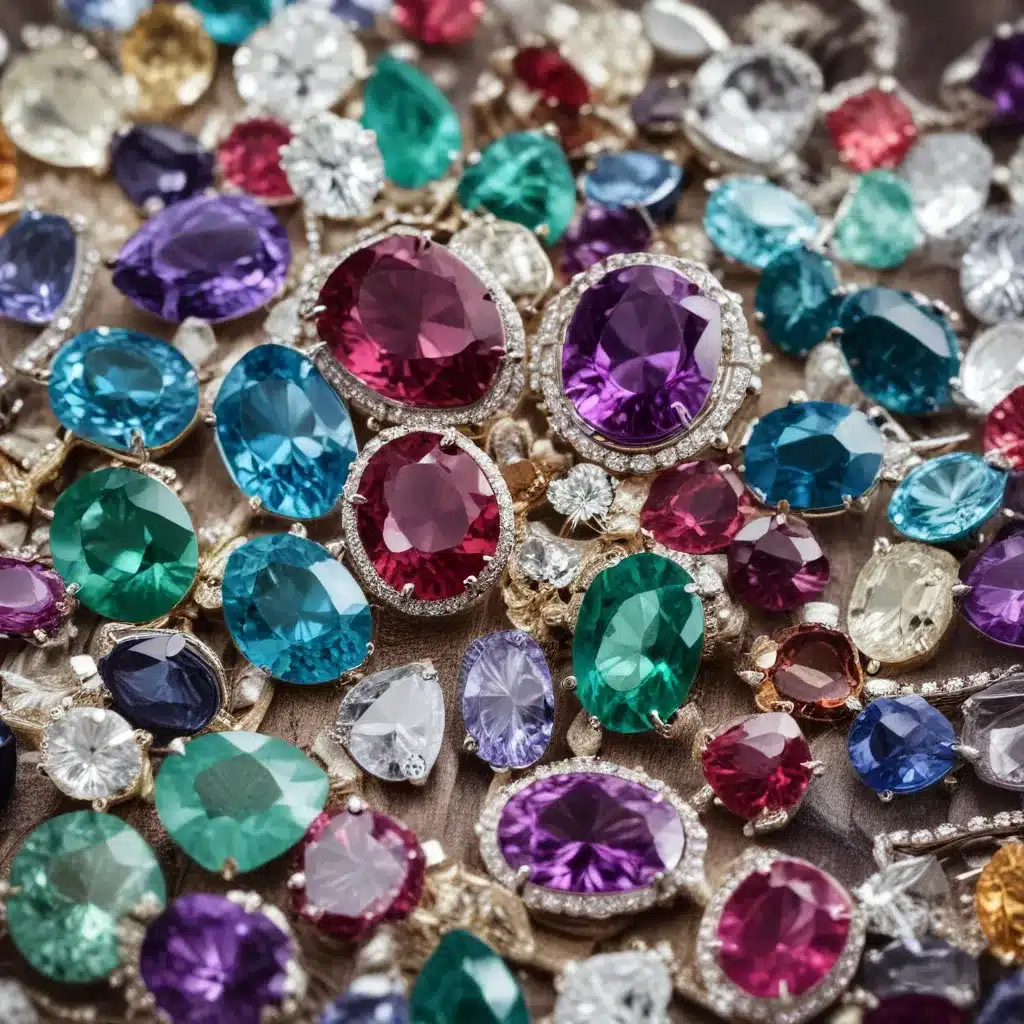
Gems and jewelry are cherished accessories that deserve diligent care to maintain their luster and brilliance. Whether you own a classic diamond solitaire, a vibrant synthetic emerald, or a one-of-a-kind moissanite cocktail ring, proper maintenance is key to keeping your jewelry pieces in pristine condition for years to come.
Gemstone Jewelry Maintenance
Cleaning and storage are fundamental aspects of caring for gemstone jewelry. Ultrasonic cleaning, gentle scrubbing with mild soap and water, and thoughtful storage practices can all contribute to preserving the life and appearance of your prized possessions.
Cleaning Techniques
Ultrasonic cleaning is a popular method for removing built-up dirt and grime from jewelry. These devices use high-frequency sound waves to agitate a cleaning solution, effectively dislodging contaminants from the intricate nooks and crannies of your pieces. However, caution is advised – the powerful vibrations can potentially loosen settings or even chip or crack delicate gems like opal or fracture-filled diamond.
For a gentler approach, simply soak your jewelry in a mix of warm water and a few drops of mild, pH-neutral dish soap. Use a clean, soft-bristled toothbrush to gently scrub away any remaining residue, taking care around fragile components. Thoroughly rinse with clean water and dry with a lint-free cloth.
Storage Practices
Proper storage is crucial to prevent damage and maintain the integrity of your gemstone jewelry. Invest in a dedicated jewelry box or organizer with individual compartments to keep pieces separated and prevent scratching. Tarnish-resistant pouches or bags are ideal for sterling silver items.
When traveling, safeguard your jewelry by packing it in a separate, padded container. This helps minimize the risk of impacts, tangles, or other physical stresses that could compromise your precious pieces.
Certain gems, like pearls and opals, are sensitive to fluctuations in humidity. Storing these in a cool, dry environment – such as a safe deposit box – can help preserve their natural luster and prevent deleterious cracking or discoloration.
Protecting Gemstones
Gemstones vary widely in their physical properties, and understanding these differences is essential for providing the appropriate care and protection.
Avoiding Damage
The Mohs hardness scale is a useful tool for evaluating a gem’s resistance to scratches and abrasions. Diamonds, the hardest natural material, rank at 10 on the scale, while softer gems like amethyst (7) or topaz (8) require more cautious handling to prevent scratching or chipping.
Whenever possible, avoid exposing your jewelry to high-impact activities or situations where it might get bumped or jostled. Remove rings and bracelets before engaging in manual labor, sports, or other physically demanding tasks.
Environmental Factors
Environmental conditions can also significantly impact the longevity of your gemstone jewelry. Heat, sunlight, and chemical exposure can all potentially discolor, fade, or otherwise degrade certain gems over time.
For example, amethyst is known to gradually lose its distinctive purple hue when exposed to direct sunlight for extended periods. Similarly, pearls and ivory can become brittle and discolored due to drying out in dry environments.
To minimize these risks, store your jewelry away from direct light sources and avoid wearing it while using harsh household cleaners, swimming in chlorinated pools, or engaging in other activities that may expose it to potentially damaging chemicals.
Gemstone Properties
Understanding the unique properties of different gemstones is essential for providing them with the appropriate care and maintenance.
Hardness Variations
As mentioned, the Mohs hardness scale is a valuable tool for gauging a gem’s resistance to scratches and chips. Diamonds, the hardest natural material, are virtually indestructible, while softer gems like emerald (7.5-8) or tanzanite (6-7) require more delicate handling.
When selecting jewelry, it’s important to consider the Mohs hardness of the main gemstone and any accents or side stones. Pairing a soft gem with a harder one in the same setting can lead to premature wear and damage.
Optical Characteristics
Gemstones’ optical properties also play a crucial role in their overall appearance and longevity. Brilliance, luster, and color retention are all important factors that can be affected by improper care or exposure to harsh conditions.
For instance, the mesmerizing fire and sparkle of a moissanite or cubic zirconia can be diminished by a buildup of oils and debris on the gem’s facets. Regularly cleaning these stones helps maintain their dazzling visual appeal.
Conversely, gems like amethyst and citrine are susceptible to fading or discoloration when exposed to intense UV radiation. Safeguarding these pieces from direct sunlight is essential for preserving their vibrant hues.
Jewelry Maintenance Tips
In addition to proper cleaning and storage, regular inspections and professional servicing can help extend the life and luster of your gemstone jewelry.
Routine Inspections
Periodically examine your jewelry, paying close attention to the condition of the prongs, settings, and any bezels or shanks. Look for signs of wear, such as loose stones, bent prongs, or tarnished metals, and address any issues promptly to prevent further damage.
Professional Servicing
Entrusting your jewelry to a qualified gemologist or jeweler for routine maintenance is a wise investment. They can professionally repolish your pieces, tighten prongs, and identify any potential problems before they become more serious.
Many reputable jewelry stores offer complimentary cleaning and inspection services, so be sure to take advantage of these offerings to keep your gemstone jewelry in top condition.
By following these best practices for gemstone jewelry care, you can ensure your cherished pieces continue to dazzle and delight for years to come. For more information or to explore our extensive collection of synthetic gemstones, moissanite, and lab-grown diamonds, please visit Shelby Gem Factory.

